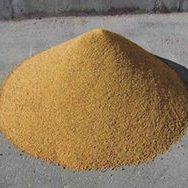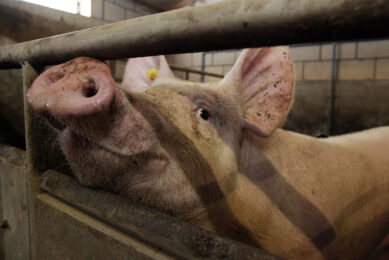Phosphorus reduction when feeding DDGS

The phosphorus in DDGS is more available to pigs than phosphorus in corn. Feeding by-products from the ethanol therefore means that supplemental phosphorus in feed rations can be reduced, says Jerry Shurson, Extension swine specialist with the University of Minnesota.
(DDGS) to a nursery diet should result in the greatest reduction in phosphorus
(P) in manure, if the diet is formulated based on available P. “With DDGS, about
90% of the phosphorus present is digestible by the pig,” Shurson says. Corn
contains about 28% total phosphorus, and only 14% of that is available to the
pig. So when we feed DDGS, we get a significant boost in phosphorus levels that
are available. Adding a product, such as phytase, will make even more phosphorus
available to the pig and reduce the amount of P in manure, he says.
Opposite in cattle
While ethanol co-products can reduce the
amount of phosphorus in pig manure, it’s just the opposite for feedlot cattle,
notes Allen Trenkle, professor emeritus of animal science at Iowa State
University. “Grains are going to contain more phosphorus than forages, so in the
feedlot, you are going to have more phosphorus in the manure,” he says. “Feeding
DDGS to growing and finishing cattle fed high-corn diets will result in
increased phosphorus excretion that must be recognized and managed,” he says.
Trenkle says the situation is different with dairy cows. “Lactating cows have a
high phosphorus requirement, so you are going to need some supplemental P,” he
says.
Source: iowafarmer.com
Join 26,000+ subscribers
Subscribe to our newsletter to stay updated about all the need-to-know content in the feed sector, three times a week. Beheer
Beheer









 WP Admin
WP Admin  Bewerk bericht
Bewerk bericht